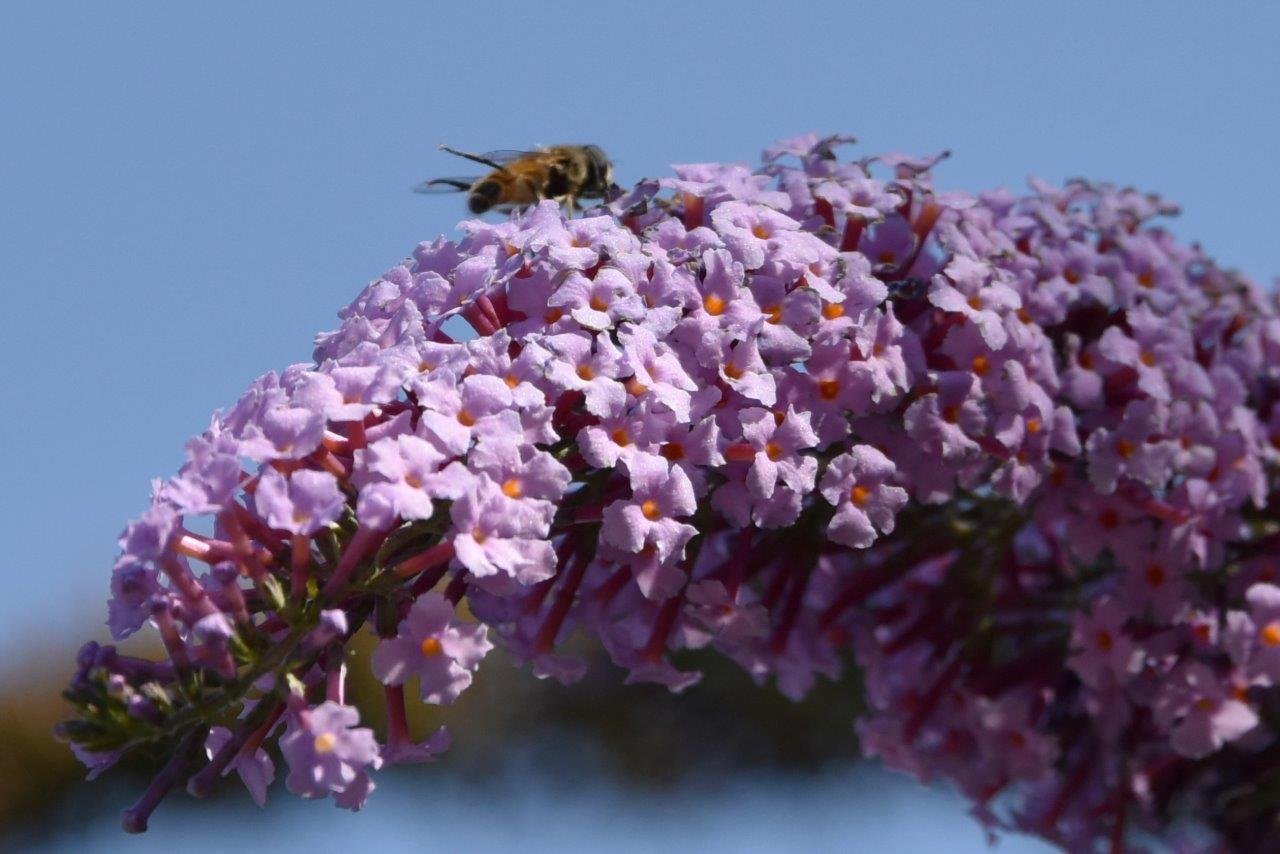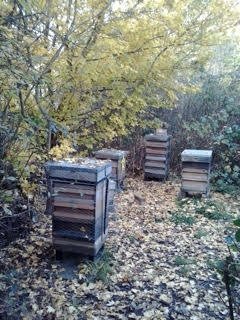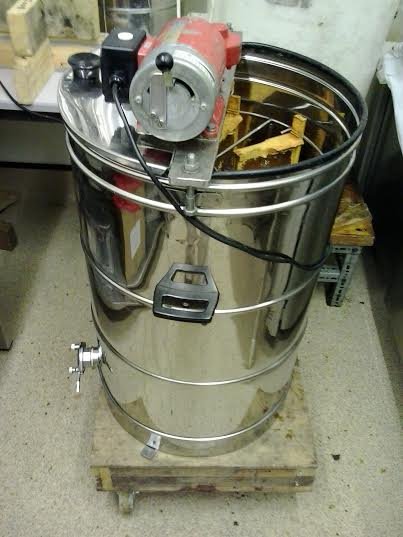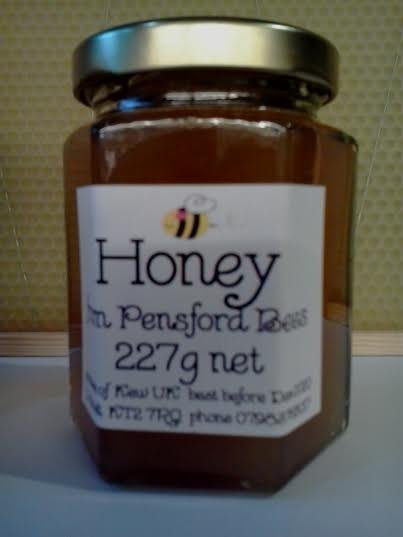Bees
Honeybees are wild creatures and through the ages people have developed ways of keeping them to make harvesting honey easier. Pensford bees live in wooden boxes that are stacked one on top of another to allow for colony expansion. Each box has 11 or 12 frames that hang on rails, resembling a filing cabinet of honeycombs. The large one at the bottom contains the queen and her workers and drones. The smaller ones above are where we like the bees to store their honey so that we can conveniently help ourselves when the time comes.
In winter honeybees do not hibernate but make a warm cluster around the queen and survive by eating honey they make and store in summer and autumn. They will fly from the hive whenever temperatures are high enough to gather any nectar or pollen available from winter flowers. Bees enjoy a wide variety and abundance of flowers in and around Pensford Field that enable them to thrive. Hazel, blackthorn(or sloe), wild plum, willow and field maple all grown close to the hives.
As spring progresses the orchard trees including apple, pear, quince and plum begin to flower, aiding in the rapid build-up of the colony. In early summer hawthorn and rowan scent the air, bramble and alkanet will give a crop of honey.
In July and August honey boxes are filling and hives become visibly taller as more are added to make space for all the incoming nectar. The smell of ripening honey fills the air close by. If the weather holds and the honey is well-ripened in its hexagonal cells and sealed with wax a beekeeper can take some to extract. First the bees must be removed from the honey boxes by using an escape board allowing them to join the main colony below but barring their return. The boxes are taken to a clean kitchen where wax cappings are sliced off with a knife and honey spun out of the frames using a hand-cranked or an electric extractor. Thick, golden honey runs from the wax cells of the frames into the tank of the extractor, then into containers for storage and filtered into a large honey tank where it settles for several days, eventually run into jars and labeled ready for sale.
Only excess honey is taken; the colony must be left enough to last the winter, usually at least 20 kilos. If there is insufficient honey due to bad weather, the colon must be fed a quantity of sugar syrup in September, and topped up with a cake of fondant icing in the New Year.
It takes a year of work by bees and beekeepers to make a jar of Pensford honey. In autumn jars of runny and set honey will be available from Mary Smith, on 020 8878 3230.
In case of a swarm please contact Jill 07582 945 292 or Fiona on 07714 525705.
If we are not contactable then Warwick on 07788 632 552
Fiona and Jill are members of BBKA and the Apiary in Twickenham.



Extracting the honey

The final article - a pot of Pensford honey
